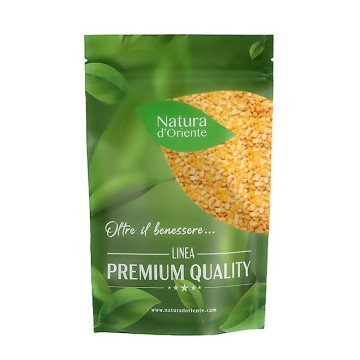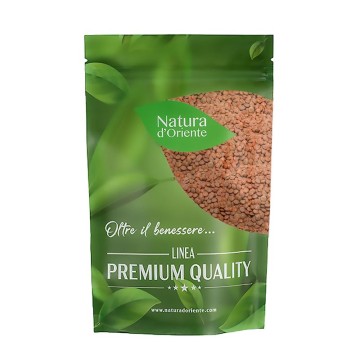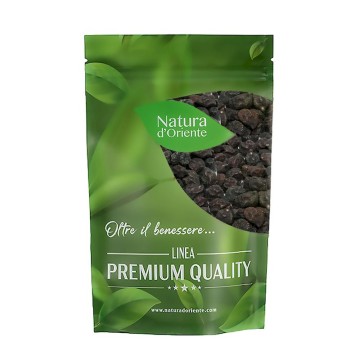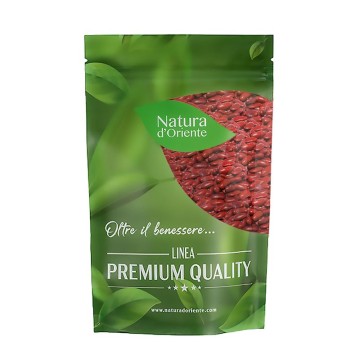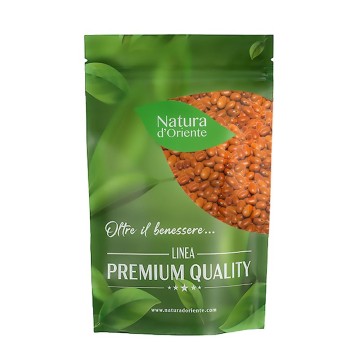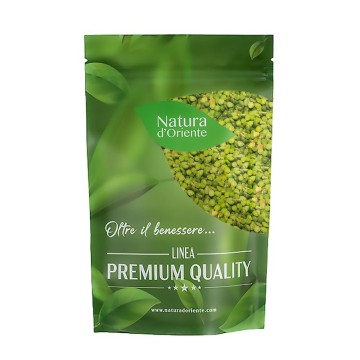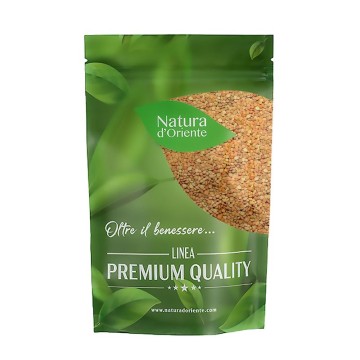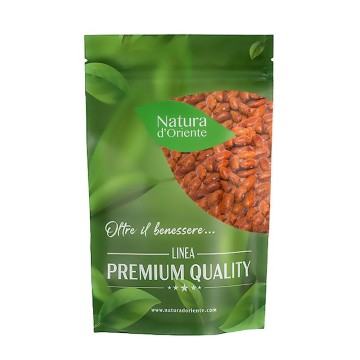This white bean, originally from South America, has had considerable success in Italy, where it is now grown and consumed with taste. Like many legumes, Cannellini beans boast a high density of nutrients that are beneficial to our body, such as high levels of protein, essential minerals and fiber; while maintaining a low level of fat.
Cannellini Beans: properties and benefits
Beans like Cannellini beans are part of a healthy diet , because they provide a high content of protein and fiber, without overloading the meal with calories - even less than other legumes.
From a nutritional point of view, these beans are effective in giving us energy. They are an excellent f onte of iron, magnesium and folate , foods that give us energy. A single serving of Cannellini beans provides over 20% of the recommended daily values of these nutrients.
Cannellini beans are also a excellent source of protein , which are considered the most important macronutrient for muscle health, to avoid increasing muscle fat mass. Protein can improve our physical activity levels, making us feel fuller for longer. A precious source of amino acids, to be combined with cereals, for those who follow a vegetarian and vegan diet.
Also for our energy, the iron contained in Cannellini beans is significant for maintaining optimal levels of hemoglobin in the blood - which carries oxygen throughout the body. A diet rich in legumes, in fact, avoids fatigue and iron deficiencies.
Another beneficial mineral is magnesium, found in abundance in white beans . It turns out to be very effective in maintaining optimal blood flow throughout the body. Also known as beneficial for the nervous system, muscle contraction and regular maintenance of the heart rhythm.
Other nutritional benefits of white beans include their low fat content and calorie count. They can promote weight loss, and one of the reasons is that they have a beneficial effect on metabolism, and as alpha amylase inhibitors. These inhibitors prevent your body from absorbing carbohydrates too quickly by blocking the enzymes responsible for their digestion.
Also, as mentioned above, Cannellini beans have a very low calorie count while increasing satiety, helping the diet of anyone wishing to lose weight.
Always at the diet level, these legumes can regulate blood sugar levels by keeping them balanced. They avoid the spike in blood sugar, which is one of the precursors or symptoms of diabetes.
The amylase inhibitor in Cannellini beans can help fight this phenomenon by causing sugars to be absorbed slowly.
To avoid the risk of diabetes, therefore, in the diet you can take advantage of the fibers, contained in particular in Cannellini beans, which also facilitate our cardiovascular well-being.
For those who want nutrition that helps to have a healthy heart, a diet rich in fiber can help by balancing triglycerides.
These fat cells found in the blood are stored when the body has excess calories, which it doesn't need to use right away for energy.
To avoid accumulation, it is good not to introduce calories in excess of those we consume, but also to follow a diet rich in fiber, with foods such as beans. Cannellini beans, through the action of the fibers, are able to lower LDL cholesterol levels (considered bad cholesterol).
For our well-being, white beans contain a high level of antioxidants, such as polyphenols, which fight oxidative stress in cells, a source of damage and health risks. Oxidative stress is caused by free radical substances present in various foods and in the polluted environment. Furthermore, the ferulic acid of beans is an antioxidant that also plays a role in protecting the skin during sun exposure and is used in an anti-aging function.
Origins and History of cultivation
The bean comes from the Phaseolus vulgaris plant, a legume native to Mexico and Central America - according to some from Peru. Although the beans werehad been widespread for centuries throughout the Mediterranean, it was the African species Vigna unguiculata (cowpea) that was consumed. These American varieties, including the Cannellini, were soon the most cultivated, for greater yield and ease of planting.
We already know the consumption of beans in Greek and Roman times, and in the Middle Ages with the so-called black-eyed beans (light but with a dark dot at the point of insertion of the pod ). Historically in Italy, the combination with cereals, the classic pasta and beans, represented a protein substitute for meat.
Known as a high quality and inexpensive source of protein, beans have become a staple food in many cultures, and today their production ranges from Asia to Europe , in South and North America.
After the spread of the American bean, many varieties (over 14,000) were produced, including Cannellini.
The cannellino bean, in fact, imported into Europe by Spanish explorers probably from Peru or Argentina, and has easily adapted to our land. So much so that it has become a symbol of the typical Italian beans. Very popular in central and southern Italy, especially in Tuscany - where the inhabitants have been jokingly nicknamed "bean eaters".
Today, Cannellini beans are widely consumed products in Italy and used in a variety of popular dishes.
We know that they have also often been used in crop rotation, to enrich the soil with nitrogen: legumes, in fact, live in symbiosis with the bacteria that fix nitrogen from atmosphere to the ground.
Cannellino is similar in appearance to other white beans or haricots - so called in Great Britain, while other popular varieties are Borlotti, white beans from Spain, red beans and black beans, famous in Mexican cuisine.
Plant and Fruit
The bean plant is Phaseolus vulgaris L. which is part of the Fabaceae family. It is an annual, hardy, easy to grow plant. It is widely cultivated around the world for its seeds, which grow in pods.
Like many other legumes, it has the ability to fix nitrogen from the air to the soil, through a symbiotic relationship with the bacteria housed in the roots. Consequently, the bean is rich in protein.
The impressive diversity of colors, textures and flavors of the bean varieties makes it very popular.
There are varieties with a longer vegetative cycle, sown in spring, and others with a shorter cycle in summer and harvested in autumn.
Autumn harvests are better, as the pod has undergone temperature changes becoming more tender and flavorful.
Cannellini beans are part of the Phaseolus vulgaris, they are white (off-white color), about 1,20 cm long, with a traditional "kidney" shape and a hard coating - they are usually shiny.
Nutritional values of Cannellini beans
The best thing about these great beans is that they are a valuable source of several nutrients, including nearly 25% of the recommended daily fiber intake . Between that and their high antioxidant load, Cannellini beans are a delicious way to eat healthy.
A 100 gram portion of white Cannellini beans provides 286 kcal, less than other legumes. It also contains neither excessive carbohydrates nor fats (2.1%), proteins (20.4%) and fibers (about 20%).
Among the mineral salts are present in Cannellini beans, some moderate levels of calcium (about 140 mg), iron (about 8 mg), potassium (about 1300 mg), magnesium ( about 140 mg), copper (about 0.80 mg).
By consuming Cannellini beans, you assimilate mainly B vitamins, such as thiamin (about 0.5 mg), niacin, good doses of folate - vitamin B9 (about 400 mcg), vitamin K and vitamin E.
Beans also contain zinc, phytosterols and saponins useful for our health.
How to consume Cannellini beans in the kitchen
This specific bean variety is very popular in Italian Tuscan cuisine, featured in traditional dishes where they shine like soft, creamy beans. Minestrone with Cannellini, pasta soup and are famous



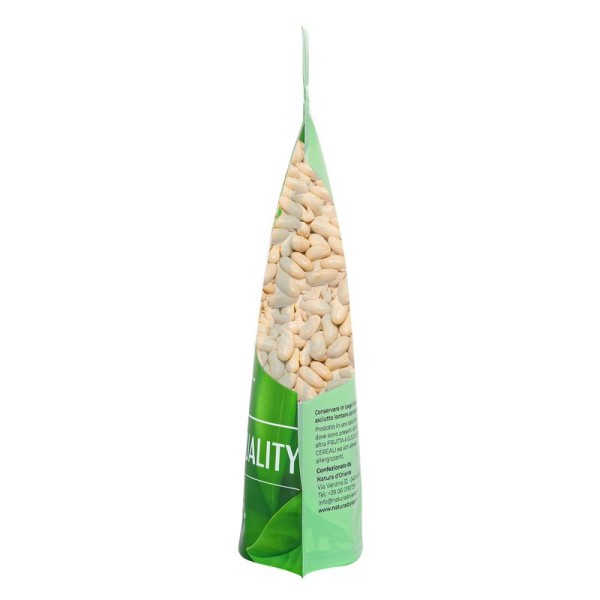





 No reward points for this product.
No reward points for this product.
